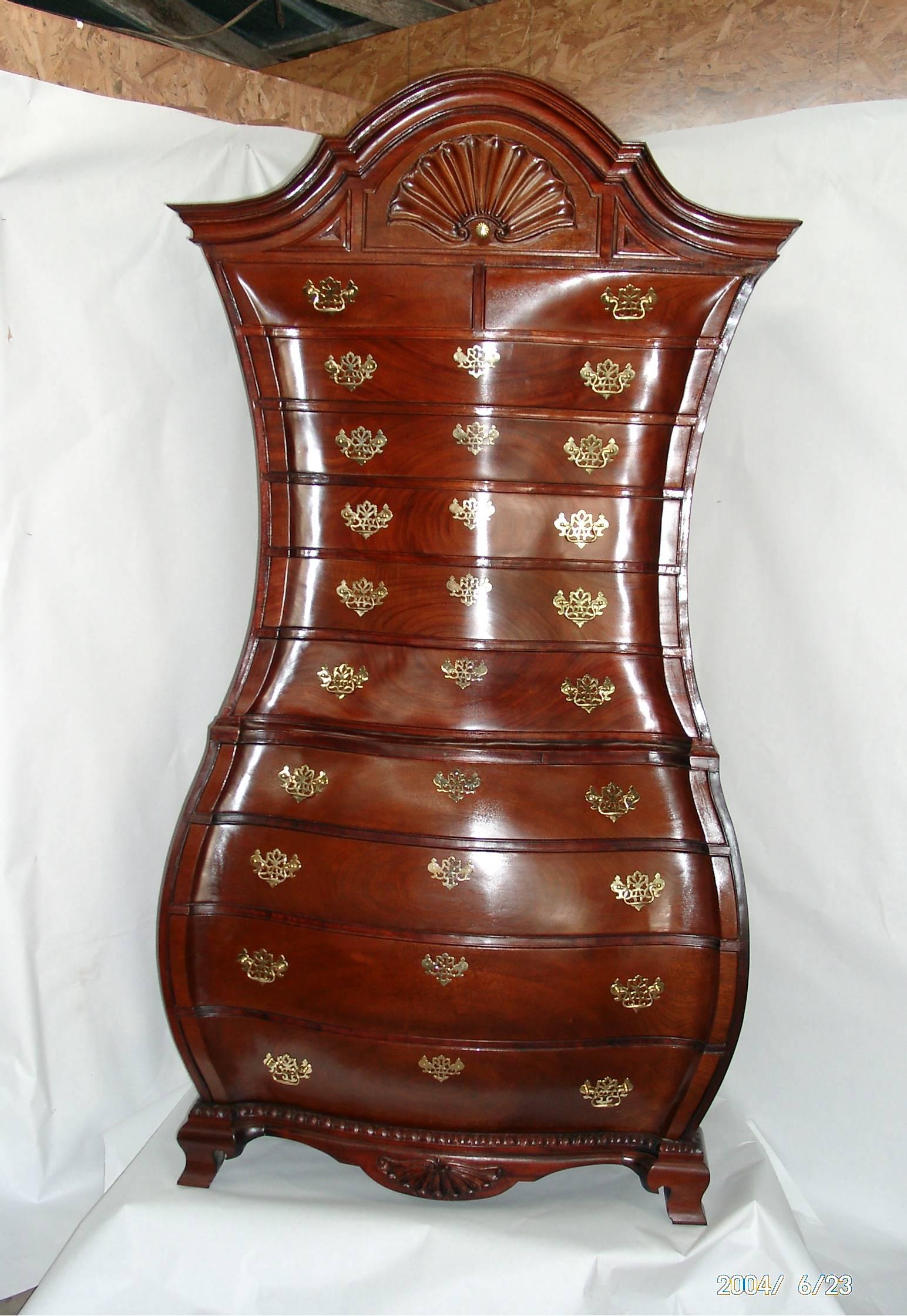History
Queen Anne furniture ushered in a new era for furniture makers in England, combining graceful lines never seen before with another new feature: comfort! Queen Anne was the last monarch from the House of Stuarts. The furniture bearing her name was popular throughout England by 1705, just three short years after her reign began. In the colonial Americas, the trend took awhile to catch on; 1720 is generally recognized as the beginning of the Queen Anne period in America. On both continents, the fad lasted until around 1750, although Mary herself died in 1714.
Wood
The type of wood used in furniture construction was one major change made by the craftsmen who popularized Queen Anne Style Furniture. In previous eras, massively sturdy pieces were constructed of heavy (and hard to work) oak. Queen Anne furniture, by contrast, was typically constructed of walnut. Cherry and maple were runners-up, and mahogany also began to gain popularity during this era.
Characteristics
Curvilinear lines made chairs, settees, and benches more comfortable than ever before, and seating was often upholstered with damask, silk, or brocade. The wing chair was introduced during the Queen Anne era and remains a popular fixture in many homes today.
Straight, turned legs braced by stretchers disappeared from both tables and chairs and were replaced by cabriole legs, the most recognizable feature of Queen Anne style furniture. These legs were hand-carved, wide at the top and narrower toward the foot, with an “ankle” that curved inwards. The feet were typically unadorned pad (or “Dutch”) feet, but on some pieces the drake or trifid foot, with three carved toes, was utilized.
Even highboys, chests, and dressers took on a curvilinear shape; bombe-style furniture with bulging fronts and sides became exceptionally popular throughout England, France, and the Americas.
During this era, function improved as well. The space-saving drop-leaf table made its first appearance. This style, too, remains popular today. Hinged card tables were a popular accessory in the home of wealthy individuals, and these antiques bear little resemblance to their modern-day counterparts. A card table was typically around three feet square, with special, flat candle holders at each corner and even coin bowls built in. On leg was typically removable and was used to brace the leaf when the table was open.
Embellishments
The elaborate carvings and flamboyant paint jobs disappeared, too, replaced by a simple carved shell- or fan-shaped motif. These were typically centered near the top of a highboy, lowboy, dresser, or chair back. Some pieces were painted white or adorned with a small amount of gilt, but for the most part the natural beauty of the wood was allowed to shine through.
What to Look For
If you’re in the market for original Queen Anne furniture, chairs are the most readily available pieces. Tables are also common. Dressers, desks, and armoires come in third. Upholstered settees, couches, and daybeds are relatively rare, although there are plenty of good reproductions of these items available.
Price
Be prepared to spend around $300 for a coffee table, end table, or set of nesting tables and $750 for a single armchair. Larger pieces, of course, will cost more: you can expect to pay up to $2,000 for a tilt-top or drop leaf dining room table without chairs and $5,000+ for a desk or armoire. Rare pieces, like an upholstered settee, may cost $10,000 or more.
High quality reproductions typically cost about the same as any modern, quality furniture; if price is your main concern Queen Anne style furniture is a good bet. Queen Anne furniture is so popular that even many discount furniture makers manufacture passable replicas.
Images
Bombe Chest: This bombe chest is decorated with the shell motif typical of Queen Anne style furniture.
Cabriole Leg: Graceful, curved cabriole legs replaced turned legs on most furniture during this era.
Queen Anne Chair: Better construction techniques and upholstery made chairs comfortable for the first time in history. Photo courtesy Lennon Hall Antiques.
Drake Foot: The three-toed Drake foot was popular on well made Queen Anne furniture.
Queen Anne Dropleaf Table: Drop-leaf and folding tables were innovative space savers and are still popular today. Photo courtesy Coyle’s Auction Gallery.

